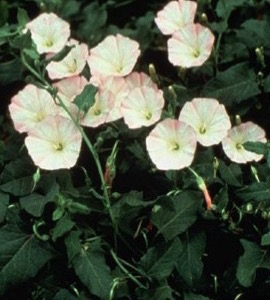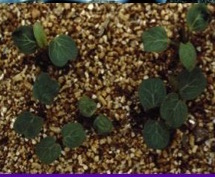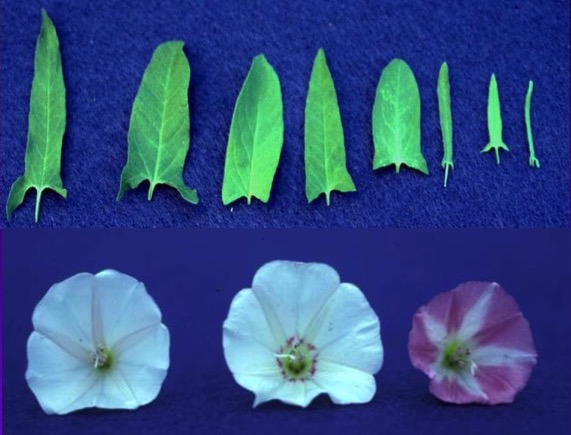Description
- Weed Description: A perennial trailing or climbing weed with white morningglory-like flowers that may reach 3 1/3 feet in length. Field bindweed is primarily a weed of nurseries, agronomic crops, and fencerows that can be found throughout the United States.
- Seedlings: Cotyledons are dark green with relatively prominent white- to light green veins. The cotyledons are almost perfectly square, approximately as long as they are wide, and are slightly indented at the tip.
- Leaves: Alternate, occur on petioles, and are triangular in outline. Leaves can occur either without hairs (glabrous) or can have hairs. The leaf bases are pointed and have lobes that point outward.
- Stems: Trail along the ground or climb onto crop plants, fences, etc. Stems may also be either with or without hairs.
- Flowers: White to pink in color and approximately 3/4 to 1 inch long. Flowers take on the shape of a funnel and also have bracts that are relatively small and separate from the flowers.
- Fruit: An oval to round capsule.
- Identifying Characteristics: Trailing or climbing vine with triangular leaves and lobes that point outward. Additionally, the small bracts that are separate from the flowers of field bindweed help to distinguish this from other similar species. Hedge Bindweed (Calystegia sepium) is similar in appearance and is often mistaken for field bindweed, however the leaf bases of hedge bindweed are cut squarely (truncate) and this weed also has large bracts beneath the flowers unlike field bindweed. Field bindweed is also often confused with Wild Buckwheat (Polygonum convolvulus), however wild buckwheat has inward-pointing bases and an ocrea at the base of each petiole.
(Missouri University - Weed Science, Division of Plant Science)
Pest image (all)



Scientific name
Convolvulus arvensis
Pest photo source
Dr. Dallas Peterson, Agronomy, KSU
Weed type
broadleaf
Production period
Preharvest
Weed life cycle
perennial
